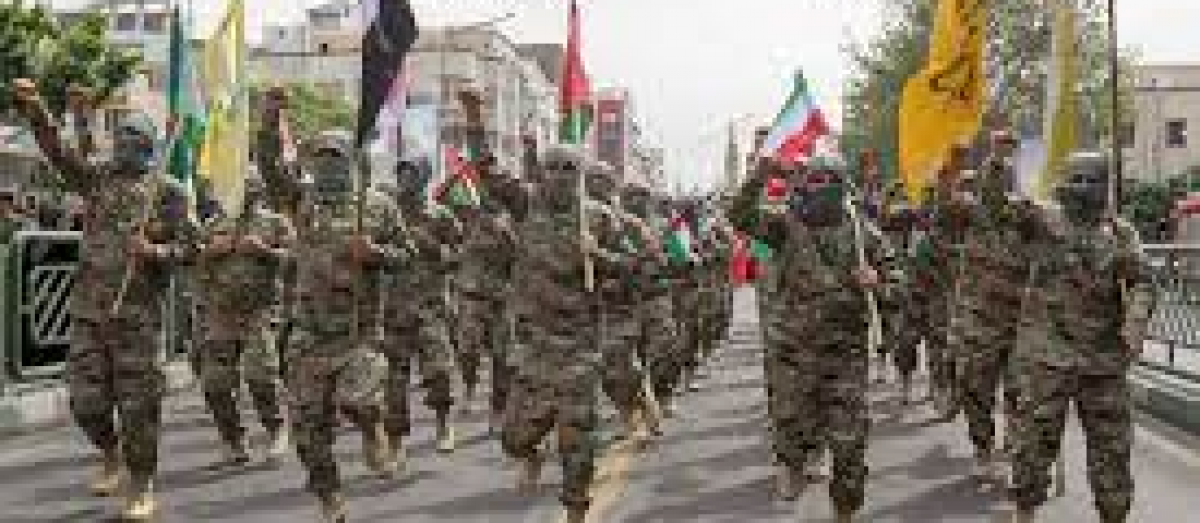See all articles in this section
This section of Militia & Terrorism Today is dedicated to the Middle East – North Africa Region. It is not necessarily focused on terrorism. I previously published a newsletter called MENA Digest, I always regretted discontinuing it. I may some day split this back out to a dedicated website.
MENA Digest
For starters, here is a list of MENA nations with some basic background information on government, religion, and ethnicity. Here, we will define the MENA (Middle East – North Africa) region and explore and explain the conflicts of the region. One by one, we’ll look at each country and the divisions in the region. The conflict is about more than religion.

MENA Defined
The MENA region is indeed broad and somewhat fluid in its definition, encompassing a diverse range of countries, religions, political ideologies, and ethnic groups. Below, is a list of MENA countries categorized by subregion, along with their predominant religions, political ideologies, and major ethnic groups where possible.
Please note that the complexities and variations within each country are considerable, and a brief summary might not capture all the nuances.
Middle East:
1. Bahrain
– Predominant Religion: Islam (Sunni and Shia)
– Political Ideology: Monarchy (Constitutional)
– Major Ethnic Groups: Bahraini, Asian, other Arab
2. Cyprus
– Predominant Religion: Christianity (Greek Orthodox), Islam
– Political Ideology: Republic
– Major Ethnic Groups: Greek Cypriots, Turkish Cypriots
3. Iran
– Predominant Religion: Islam (Shia)
– Political Ideology: Islamic Republic
– Major Ethnic Groups: Persian, Azeri, Kurd, Lur, Baloch, Arab
4. Iraq
– Predominant Religion: Islam (Shia and Sunni)
– Political Ideology: Federal Parliamentary Republic
– Major Ethnic Groups: Arab, Kurd, Turkmen
5. Israel
– Predominant Religion: Judaism, Islam (Sunni), Christianity
– Political Ideology: Parliamentary Democracy
– Major Ethnic Groups: Jewish, Arab
6. Jordan
– Predominant Religion: Islam (Sunni)
– Political Ideology: Constitutional Monarchy
– Major Ethnic Groups: Arab, Circassian, Armenian
7. Kuwait
– Predominant Religion: Islam (Sunni and Shia)
– Political Ideology: Constitutional Monarchy
– Major Ethnic Groups: Kuwaiti, other Arab, South Asian
8. Lebanon
– Predominant Religion: Islam (Shia and Sunni), Christianity (various denominations)
– Political Ideology: Parliamentary Democratic Republic
– Major Ethnic Groups: Arab, Armenian
9. Oman
– Predominant Religion: Islam (Ibadi, Sunni, and Shia)
– Political Ideology: Absolute Monarchy
– Major Ethnic Groups: Arab, Balochi, South Asian
10. Palestine
– Predominant Religion: Islam (Sunni), Christianity
– Political Ideology: Semi-presidential democracy (de jure), with separate governance structures in the West Bank and Gaza Strip
– Major Ethnic Groups: Palestinian Arab
11. Qatar
– Predominant Religion: Islam (Sunni)
– Political Ideology: Absolute Monarchy
– Major Ethnic Groups: Arab, Indian, Filipino, other Asian
12. Saudi Arabia
– Predominant Religion: Islam (Sunni)
– Political Ideology: Absolute Monarchy
– Major Ethnic Groups: Arab
13. Syria
– Predominant Religion: Islam (Sunni), with significant Shia (including Alawite) and Christian minorities
– Political Ideology: Republic under an authoritarian regime
– Major Ethnic Groups: Arab, Kurd, Armenian
14. Turkey
– Predominant Religion: Islam (Sunni)
– Political Ideology: Presidential Republic
– Major Ethnic Groups: Turkish, Kurd
15. United Arab Emirates (UAE)
– Predominant Religion: Islam (Sunni)
– Political Ideology: Federal Absolute Monarchy
– Major Ethnic Groups: Emirati, South Asian, other Arab
16. Yemen
– Predominant Religion: Islam (Sunni and Shia, mainly Zaidi)
– Political Ideology: Republic (in crisis with ongoing civil war)
– Major Ethnic Groups: Arab
North Africa:
1. Algeria
– Predominant Religion: Islam (Sunni)
– Political Ideology: Republic
– Major Ethnic Groups: Arab-Berber
2. Egypt
– Predominant Religion: Islam (Sunni)
– Political Ideology: Semi-Presidential Republic
– Major Ethnic Groups: Egyptian Arab, Nubian, Bedouin
3. Libya
– Predominant Religion: Islam (Sunni)
– Political Ideology: In transition (internationally recognized government and parallel institutions)
– Major Ethnic Groups: Arab-Berber, Tuareg, Tebu
4. Morocco
– Predominant Religion: Islam (Sunni)
– Political Ideology: Constitutional Monarchy
– Major Ethnic Groups: Arab-Berber, Berber
5. Sudan
– Predominant Religion: Islam (
Sunni)
– Political Ideology: Provisional government (following military coup, previously federal republic)
– Major Ethnic Groups: Sudanese Arab, Fur, Beja, Nuba
6. Tunisia
– Predominant Religion: Islam (Sunni)
– Political Ideology: Republic
– Major Ethnic Groups: Arab-Berber
This list is a high-level summary and doesn’t capture all the religious sects, minority groups, or political nuances within each country. It should also be noted that within these countries, the predominant religion or ethnic group does not necessarily translate into political power, which can be concentrated in the hands of a specific sect or faction, as

